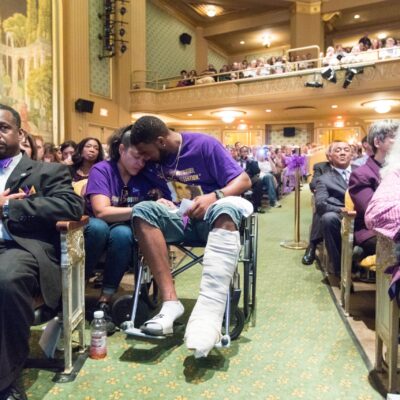More feature articles Candid camera A life in pictures Mark in CharlottesvilleAs part of the Festival of the Photograph, Mary Ellen Mark will be one of three headlining artists (the others are Joel-Peter Witkin and James Nachtwey). Learn more about her at these festival events: INsight conversation with NPR’s Alex Chadwick Exhibition of prom photos Screening of two films by Martin Bell, Mark’s husband and collaborator Alexander: Extraordinary Child and Twins |
Its name, Polaroid Land, conjures fantasies of an intrepid landscapist like Edward Weston or Carleton Watkins, and its somehow prewar appearance enhances the aura. But the 20”x24” camera takes the name stencilled across its front from Edwin H. Land, the founder of Polaroid, and it did not come into existence until 1976. Only six were built, all hand-machined, weighing over 200 pounds each; only five of those are still in use, scattered around the world in studios from San Francisco to Prague.
The camera Mary Ellen Mark used at the Charlottesville High School prom is the resident camera at a New York studio, where the director of photography is Jennifer Trausch, the woman I watched operating it. Back in New York, she explained to me by phone that when the Polaroid factory closed in March, the studio bought the remaining stock of 20”x24” black-and-white paper, which will be finished out by Mark’s prom project. (There will still be a couple years’ worth of color paper left.) Supply and demand: Each sheet of this paper, every single shot, now costs $200.
Given the special love many photophiles have for this camera and the detail it allows, it’s not surprising that Internet rumors abound to the effect that another company may begin producing a replacement paper. “It’s still very unclear whether any of that will happen,” says Trausch. She sounds unexcited about other 20"x24" cameras that have recently entered the market. “The original cameras are workhorses. They’re impeccable machines,” she says.





